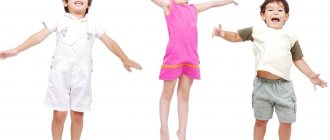Pedagogical communication is a specialized style of interpersonal relationships that is established between the teacher and children. Such relationships have a multi-level structure and imply the establishment of contact filled with mutual understanding between students and teacher. The effectiveness of this process is related to the degree of satisfaction of the needs of each participant in this relationship. In this article, we propose to consider different styles of communication between teachers and children and identify the most appropriate form of communication.
One of the factors influencing the development of a child’s personality is the communication style inherent in the teacher.
The purpose of pedagogical communication
Pedagogical communication should be considered as one of the forms of communication, implying common interests, thoughts and feelings. Creating a friendly atmosphere between the teacher and students allows you to achieve maximum results in the matter of learning and developing various skills. This process has many different facets, each of which contains the context of interaction.
There are several functions of pedagogical communication, each of which is important in the formation of the student’s personality. Experts identify the following functions of self-actualization:
- emotive
- educational
- regulatory
- facilitative.
Properly constructed communication arouses each student’s interest in mastering new knowledge and skills, and also contributes to further personal development. One of the important aspects of such a connection is the teacher’s respect for the student’s personality .
The teacher’s task is to study the inner world, physical condition and other individual characteristics of each child.
Understanding personality traits allows you to create the right atmosphere filled with goodwill. It is this atmosphere that allows students to develop a thirst for constant development. Correct perception of the student’s personality is one of the most important functions in pedagogical communication.
The information component of this process also plays an important role in the development of a child’s personality. This function contributes to the development of the cognitive process and implies complete mutual understanding between students and teacher. This function is aimed at creating positive motivation, which makes students achieve various goals. Help in overcoming psychological barriers that prevent self-education and becoming part of society is one of the significant components of the information function.
The information function contains three components: collective, group and individual relationships. Individual relationships form a connection, thanks to which the teacher has the opportunity to influence the child’s consciousness, correcting and changing his behavioral model.
The style of pedagogical leadership can be defined as methods of educational influence
The purpose of the main functions of pedagogical communication:
- Contact function - used to create a communication link used to receive and transfer skills and knowledge.
- Incentive function is a kind of motivation of students aimed at achieving certain results and performing various actions.
- Emotive function - used to evoke certain feelings and emotions in the child, which are subsequently corrected or changed using special methods of psychological influence.
Ethnic values play an important role in the relationship between teacher and students . Care, attention, self-fidelity, trust and frankness allow us to achieve productive communication, which will result in highly motivated students.
Styles of pedagogical communication
The forms of communication established between children and the teacher have a significant impact on the formation of the child’s personality . Based on the chosen style, a method of influence that is educational in nature is determined. This impact manifests itself in the form of requirements for the behavioral model of students. The form of pedagogical communication implies the organization of activities, the purpose of which is to create a communicative connection between children and the teacher. There are four styles of pedagogical communication:
- authoritarian form;
- democratic form;
- liberal form;
- mixed form of communication.
Pedagogical communication styles and their characteristics are briefly summarized below. We recommend that you familiarize yourself with them.
Authoritarian style
The authoritarian relationship between the teacher and students is characterized as a style of pedagogical communication that has clearly defined attitudes.
Teachers who adhere to this style use a technique of prohibitions and restrictions in relation to those children who experience difficulties in the learning process. The authoritarian style implies a strict form of relationships and punishment for disobedience. Such a teacher is an undoubted leader, whose orders must be carried out at any cost . This style has in its arsenal many different methods of influence that are similar to each other.
The disadvantage of this approach to the process of creating a communicative connection is frequent conflicts between students and the teacher. An unfriendly atmosphere established in a team can cause disruptions in the process of forming a child’s personality. The authoritarian style of pedagogical communication involves the use of various methods aimed at accelerating the process of personal development of students. However, the choice of this technique can become a provoking factor in the occurrence of various disorders, since the individual characteristics of each person are not taken into account.
The style of pedagogical communication is an established system of techniques and methods used by the teacher in the process of interaction with students and their parents
An authoritarian communication style implies rapid achievement of goals and maximum effectiveness.
Despite good intentions, this style “breaks” students and causes hatred towards the teacher. Adherents of this method of education draw a kind of line between themselves and their students. Such alienation can cause nervous tension and increased anxiety in students. Such teachers exaggerate the laziness, irresponsibility and lack of discipline of students, despite their high level of independence.
Liberal style
Adherents of this style can be characterized as irresponsible and uninitiative teachers who often take inconsistent actions in relation to their students.
Such teachers often forget about their previous requirements and, after a certain period of time, set directly opposite goals. Such a connection can be characterized as a pronounced overestimation of children's capabilities and low interest in the learning process itself. Such teachers do not seek to identify the degree of fulfillment of assigned tasks, and their attitude towards students depends on their emotional mood. Being in a good mood, the teacher gives students positive grades, and if they are in a bad mood, they can punish them for disobedience.
Educators who adhere to this model of relationship with children are not an authority for the latter. The desire to prevent conflict situations is characterized as a manifestation of natural sympathy and goodwill. Such people perceive children as independent individuals who are highly sociable and proactive.
Democratic style of communication
The democratic style of communication is one of the most effective forms of interaction between students and teachers.
This style involves establishing individual contacts filled with mutual respect and trust. Such teachers try to create the right emotional connection with students, without using methods of punishment and an overly strict attitude. The choice of this style allows you to instill in your child the desire to master new knowledge and develop his own personality.
In such a team there is an atmosphere of friendliness and mutual understanding. Communication with the teacher generates extremely positive emotions in students. This approach to learning is key to developing self-confidence and strengthening children's self-esteem.
All methods of education used in this type of communication are aimed at instilling social values. This style is the most acceptable type of communication, since a two-way connection is created, which allows us to identify the degree of perception of joint actions. This style also helps the teacher identify children’s ability to admit their mistakes. The teacher’s task is to stimulate intellectual development and create an incentive aimed at achieving set goals.
The style of pedagogical communication has a significant dependence on the personal qualities of the teacher and the communicative situation itself.
Mixed style
A mixed form of communication between students and the teacher most often manifests itself as a combination of authoritarian and democratic communication styles. Much less often there is a mixture of liberal and democratic forms of relationships.
It should be noted that the chosen style of pedagogical communication is a manifestation of acquired personal qualities. Such qualities develop in every teacher throughout the entire process of teaching activity. In addition, the choice of a particular style is based on certain individual personality traits.
Narcissistic people with aggressive behavior patterns often choose an authoritarian form of communication. Teachers with a democratic style can be characterized as balanced people who show kindness, sensitivity and attention to each child. In objective reality, it is almost impossible to see a “pure” form of communicative connection between students and teachers. An individual style of pedagogical communication involves the use of educational methods that relate to various forms of interaction with students.
The educational process involves a high degree of interaction not only with students, but also with their parents, as well as other teachers. Many teachers often have to communicate with various social bodies involved in education management and public activities. Each teacher must understand the psychological aspect of this process in order to have the necessary influence on the development of the child’s personality.
Family education styles and their characteristics according to the type of “maternal” attitude towards the child:
Mother's attitude towards her teenage son as a “replacement” husband
The mother demands constant attention and care from the teenager. The mother constantly interferes in her son’s personal life, limits contacts with peers and peers, and strives to be aware of his personal and intimate life. You can often hear dissatisfaction from a mother about the fact that her son seeks to distance himself from her and avoids communication. In a less crude form, the teenager is assigned the role of “head of the family.”
Hyperprotection and symbiosis
The mother has a strong desire to hold on, to tie the child to herself, to limit his independence out of fear of a possible misfortune with the child in the future. In psychology, such an attitude is called the “smart Elsa” complex. The mother downplays the child's real capabilities and abilities, which leads to restrictions and maximum control, the desire to do everything for the child in order to protect him from imaginary misfortunes in the future.
Educational control through deprivation of love
This style of parenting is characterized by demonstrating to a child or teenager the attitude “That he is not needed like this, his mother does not love him like this” in the event of any undesirable behavior, disobedience, or insufficient, in the parents’ opinion, school performance, skills and achievements.
Parents, as a rule, do not directly express their dissatisfaction, do not speak it out, or try to explain to the child why he did something wrong. Parents simply stop talking to the child, ignore him, and talk about him in the third person.
In hyperthymic adolescents, such an attitude of parents towards him gives rise to a powerless feeling of anger and rage, outbursts of aggression. A teenager with such behavior wants to prove his existence, to infiltrate the family “We”. The parent, out of fear of aggression, goes to peace, or through retaliatory aggression (slapping, beating) tries to overcome the wall of alienation he has created.
Hyperthymia is a persistent high mood, cheerfulness, accompanied by personal and professional activity, increased socialization.
In sensitive children or adolescents, such an attitude from parents creates a deep feeling of loneliness and uselessness. In order to regain the love of his parents, the child is forced to limit his own individuality, sacrifice his self-esteem, depriving himself of his own “I”. In this way, parents achieve obedience by devaluing the child’s personality.
Educational control by inducing feelings of guilt
A child who violates a ban is labeled by his parents as “ungrateful”, “causing his beloved mother so much grief”, “betraying parental love”, etc. In the future, the teenager, under the constant fear of being guilty of the problems of his parents, is forced to fetter his own independence and initiative.
Styles of family education - books 1. Azarov Yu.P. The art of education. M., 1985. 2. Dobrynina O. A. The problem of creating a favorable socio-psychological climate for the family (on the example of metallurgical workers): Diss. ...cand. psychol. Sci. Novokuznetsk, 1992. 3. Druzhinin V. N. Family psychology. – M., 1996. – 158 p. 4. Kulikova T. A. Family pedagogy and home education: A textbook for students. medium and higher ped. textbook establishments. - M: Publishing House, 2007 5. Shneider L. B. Family psychology: a textbook for universities / L. B. Shneider. — Ed. 3rd. M.: Academic Prospekt; Ekaterinburg: Business book, 2007.
Structure of pedagogical communication
As mentioned above, pedagogical communication has a developed structure, consisting of several stages. At the first stage, the teacher’s task is to create a model of behavior that will be used throughout all communication with students. At this stage, it is very important to have a clear interaction plan, which should contain the methods used to influence children. In this matter, the target setting is of paramount importance. The teacher’s task is to select tools that will attract children to interact and become the key to a creative atmosphere in the team. These same methods make it possible to reveal the individual facets of each student’s character.
Personal qualities that determine the style of communication include mastery of organizational techniques and the teacher’s attitude towards children
Next comes the communication attack stage. This process implies the teacher’s initiative in creating a communicative connection with students. There are several techniques for establishing interaction, which involve the use of various dynamic influence techniques:
- Infection is a method aimed at eliciting a subconscious response in children. The use of nonverbal methods of influence allows us to understand the experiences of children and identify the most critical vulnerabilities in their minds.
- Suggestion is the use of influence methods for the purpose of infecting with motivation.
- Persuasion is a method of changing worldview and behavior patterns using reasoned and motivated influence.
- Imitation is an analysis of a behavioral model and a conscious form of identifying oneself with this model.
The teacher’s task is to create a two-way communication, thanks to which he can obtain information about the judgments, dreams and desires of the students. This connection helps to convey to children optimism in life, increase self-esteem and create the right motives aimed at mastering various knowledge and skills.
Types of teachers
Communication style determines different types of teachers:
- proactive,
- reactive,
- overactive.
Teachers of the proactive type are proactive in organizing communication and individualize their communication with students. They know what, though, and understand what in their behavior contributes to achieving their goal.
The reactive type of teachers is characterized by flexibility in their instructions and internal weakness. As a rule, they have vague goals and adaptive behavior.
The overactive type of teachers is characterized by a tendency to exaggerate their assessment of their students and build unrealistic communication models. Such a teacher believes that an active student is a bully, and a passive child is a lazy person.











